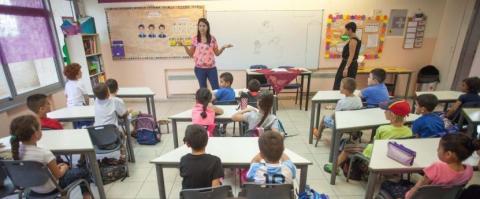Israel Is Sitting on an Education Time Bomb
The data on qualification for the bagrut (matriculation certificate) from last year show dramatic differences between Jews and Arabs, and between pupils from the center of the country and those from the periphery. In many of the Arab and Haredi communities, the rate of students taking the maximum five units of math for the bagrut is especially low. In Immanuel, Bir al-Maksur, Rahat, Jisr al-Zarqa and Beitar Illit, no students took the bagrut at this level. In the periphery there was also a relatively low rate of students taking the highest level of the math bagrut: just 2 and 3 percent in Hatzor Haglilit and Ofakim, respectively, compared to 26 and 25 percent, respectively, in Kiryat Ono and Ramat Hasharon. A similar picture emerges with the advanced English bagrut.
The source of these disparities can be easily pinpointed. Data published in TheMarker show that from the day they are born, Israeli children are caught in a vicious circle of socioeconomic gaps that only grows as they progress through the school system. The Education Ministry is not the only body responsible for these divides, but it has the responsibility to reduce them as much as possible.
One cause of these gaps is the budgets that are allocated for students from different population groups. This starts in preschool and steadily increases until, by the end of high school, a Jewish student (from a low-income background) gets 35-68 percent more than an Arab student. Among the Jewish public, the religious sector gets clear priority – the average investment in a religious student in elementary school, for example, is 30 percent higher than the investment in a secular student. This dual discrimination – for the benefit of the religious and to the detriment of the Arabs – is an ongoing disgrace for the heads of the Education Ministry.
According to international indices, Israel has one of the world’s largest achievement gaps between outstanding students and weak ones. This internal threat is just as existential, perhaps even more so, than all the familiar and ever-changing security threats. The Israeli government is wrong not to declare war on these disparities. It will bear the responsibility for their heavy cost.

